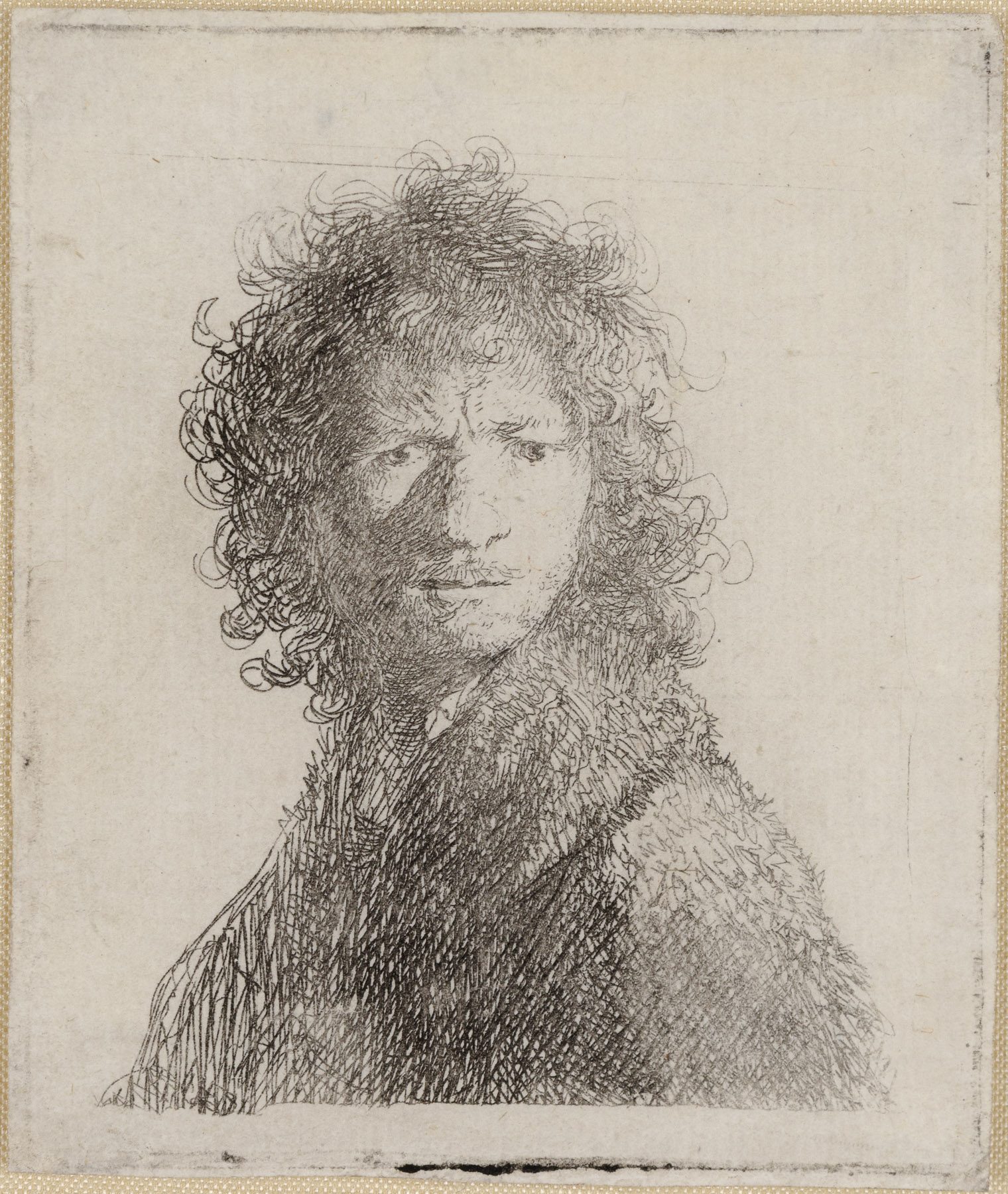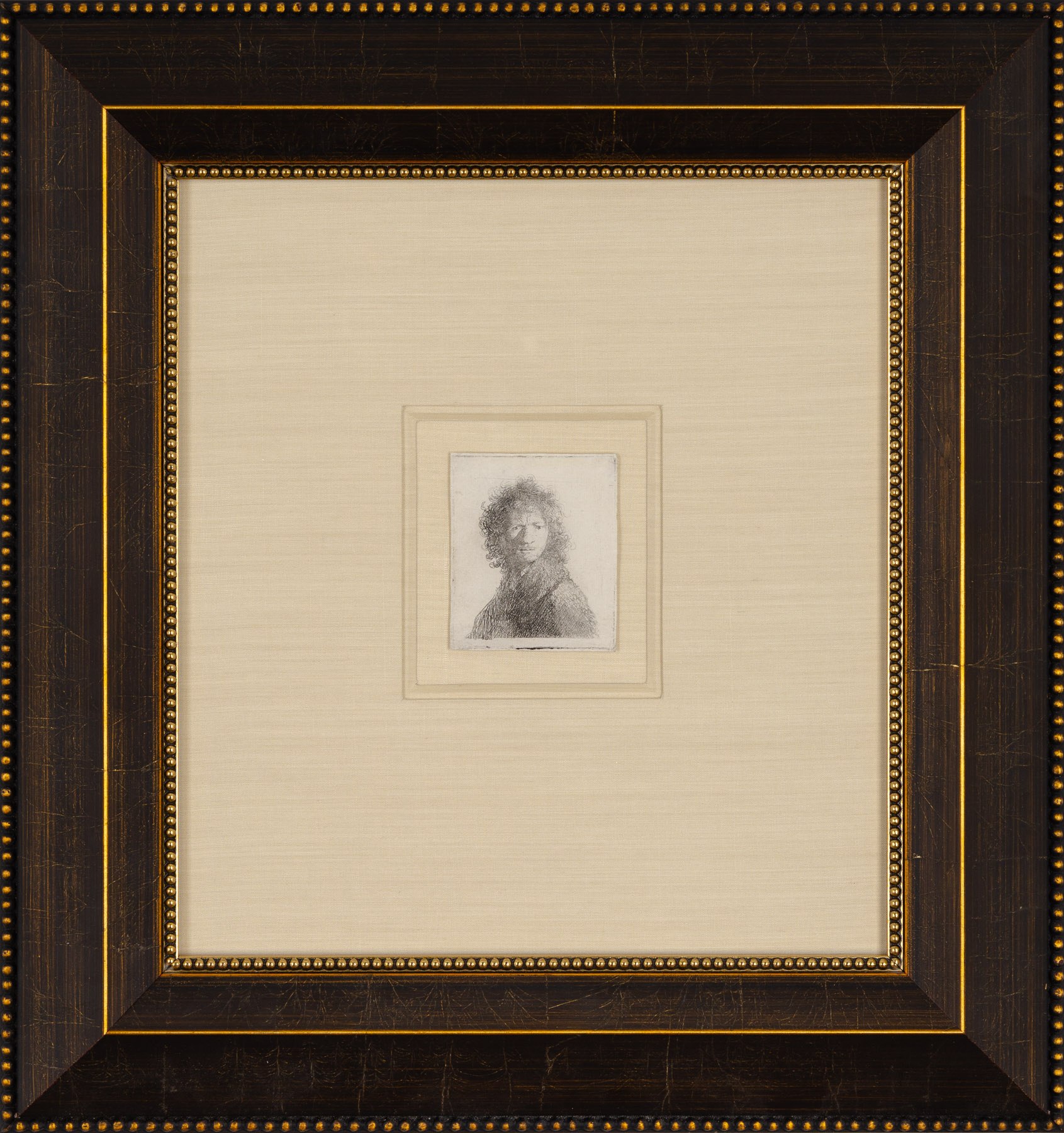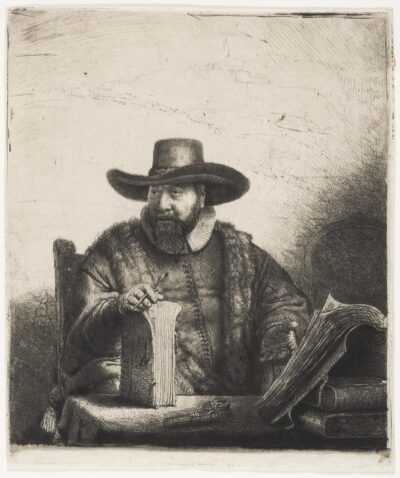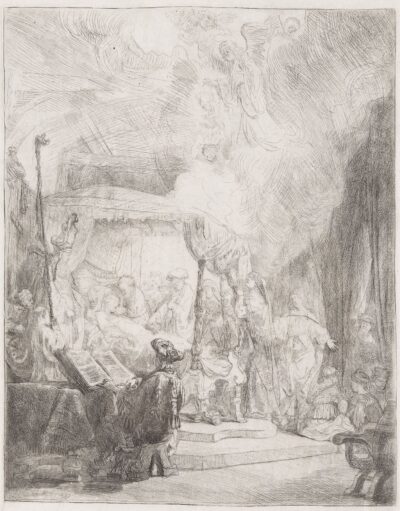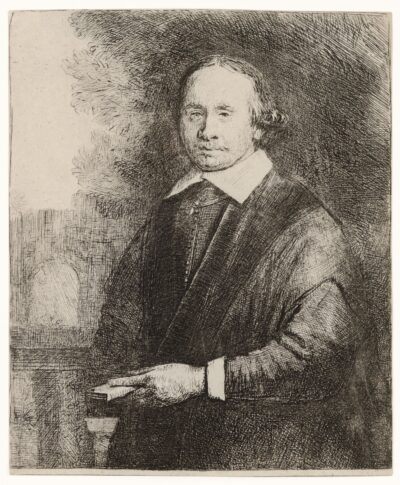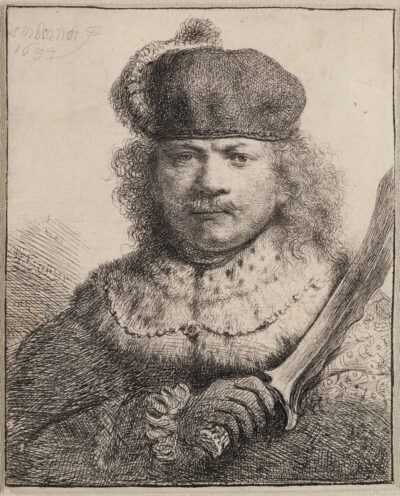Self-Portrait, Frowning: Bust
Rembrandt Van Rijn
Self-Portrait, Frowning: Bust
etching
1630
An original Rembrandt Van Rijn etching.
1630
Original etching printed in black ink on laid paper.
An impression of Bartsch’s third and final state, Usticke’s second state of two, New Hollstein’s third and final state, of this rare etching, characterized by G.W. Nowell-Usticke in his 1967 catalogue Rembrandt’s Etchings: States and Values as “a very scarce portrait, rarely fine,” and assigned his scarcity rating of “RR-“ (one of only approximately 50 impressions extant in 1967), printed after the two horizontal lines across the plate at the top of the head were burnished out (according to Usticke traces of these lines still show slightly in early impressions such as this one).An impression of Bartsch’s third and final state, Usticke’s second state of two, New Hollstein’s third and final state, of this rare etching, characterized by G.W. Nowell-Usticke in his 1967 catalogue Rembrandt’s Etchings: States and Values as “a very scarce portrait, rarely fine,” and assigned his scarcity rating of “RR-“ (one of only approximately 50 impressions extant in 1967), printed after the two horizontal lines across the plate at the top of the head were burnished out (according to Usticke traces of these lines still show slightly in early impressions such as this one).
Catalog: Bartsch 10 iii/iii; Hind 30; Biorklund-Barnard 30-M; Usticke 10 ii/ii; New Hollstein 68 iii/iii
Image Size: 2 ⅞ x 2 ⅜ inches
Framed Size: 17 3/8 x 16 3/8 x 1 1/4 inches
This etching belongs to a group of four prints from 1639 in which Rembrandt recorded his face exhibiting a variety of expressions (B. 10, 13, 316, 320). In this one Rembrandt glares furiously at the viewer. His anger is conveyed most eloquently by the straight lines of his mouth, the round, dark eyes and his knotted brow. The artist is bare-headed and his unruly hair adds to the drama of the picture. The same applies to the straight line of the shadow on the left of the face, which enhances the expression’s intensity. Because of the simplicity of the clothing – Rembrandt wears a cloak with a fur collar, under which we glimpse a white shirt – all attention is focused on the face.
